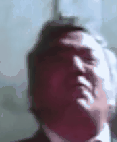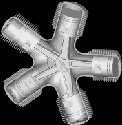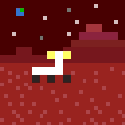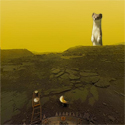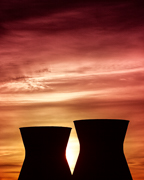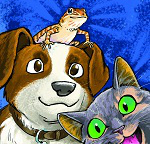|
mng posted:I'm hemming and hawing about what my next purchase will be. I have an entry-level DSLR and the iOptron SkyTracker looks pretty attractive for tracking. On the other hand, I'm also looking at a couple of reflector scopes which are around the same price point that I can adapt the camera to. Orion StarBlast 4.5 and the Celestron Astromaster 130EQ are what I have my sights on. I'd stick with the DSLR and the iOptron Skytracker for now. Maybe Look at the Smart EQ / HEQ5 or similar as a gateway later to mounting a small refractor and exploring the world of go-to and autoguiding. I definitely would not want to be imaging with either of the setups you mention, the mounts are extremely basic and there is little chance of them causing anything other than frustration. I give the same advice to anyone who asks me about astrophotgraphy, start small, widefield imaging with a DSLR can yield excellent results, likewise for a small refractor. People who jump into attempting to image with reflectors on basic EQ mounts never have a fun time. I know because it is exactly what I did when I started out.
|
|
|
|

|
| # ? Apr 29, 2024 11:38 |
|
Alright, thanks for the replies! I will go for the SkyTracker for the time being and see how I like it.
|
|
|
|
So I finally took the plunge and got a nice pair of binoculars! I did some google searching of what I should look for and really excited to see some cool space stuff! Anybody have some must see things I can view with some 15x70?
|
|
|
|
smarion2 posted:So I finally took the plunge and got a nice pair of binoculars! I did some google searching of what I should look for and really excited to see some cool space stuff! Do you have any hot neighbors?
|
|
|
|
GutBomb posted:Do you have any hot neighbors? Hey ohhhhh I just want to see cool space poo poo I hope I can find it
|
|
|
|
smarion2 posted:So I finally took the plunge and got a nice pair of binoculars! I did some google searching of what I should look for and really excited to see some cool space stuff! You should be able to pick out some, if not all, of the Galilean moons pretty well. You might be able to see the phase of Venus too. The Pleiades should pop out nicely.
|
|
|
|
slidebite posted:The Pleiades should pop out nicely. This looks particularly nice in binoculars for me because the FOV is so large you can really appreciate it. Even the biggest eyepiece of my scope doesn't really fit the whole area.
|
|
|
|
I'm so excited! I read the andromeda looks really cool. Will I be able to see any nebula our is that limited to scopes? I live in Tampa, FL if that matters (i think it does).
|
|
|
|
Orion's nebula is really nice even in binoculars.
|
|
|
|
smarion2 posted:I'm so excited! I read the andromeda looks really cool. Will I be able to see any nebula our is that limited to scopes? I live in Tampa, FL if that matters (i think it does). I'd grab this book. Turn Left at Orion It's a great book, written for beginners by a seasoned astronomer. It will help you find, and observe objects, and show you what you should reasonably expect with your binocs. It's broken up by season, so it will have stuff for you to find all year long.
|
|
|
|
EpicPhoton posted:I'd grab this book. This is perfect thanks so much! This is one of my favorite threads. some of you guys post some really impressive pics that I would love to see with my own eyes one day
|
|
|
|
smarion2 posted:This is perfect thanks so much! This is one of my favorite threads. some of you guys post some really impressive pics that I would love to see with my own eyes one day Most of the pictures are really long exposures with a camera. You're not going to see anything like the jellyfish posted above without using photography. The light from those objects is just so dim that you wouldn't be able to see it. The camera can see it if the shutter is open long enough for the tiny bit of light to soak into it. At best andromeda (the easiest galaxy to see) is going to be a tiny smudge. You only get to see the detail with a really huge scope or with long exposure photography. That being said, andromeda is the most exciting smudge ever and the feeling you'll get when you see it with your own eyes the first time is incredible and I'm not being sarcastic. GutBomb fucked around with this message at 20:56 on Jan 13, 2015 |
|
|
|
So apart from the ability to use a camera away from the scope, what's the pros/cons of adapting a dslr camera to a scope for astrophotography as opposed to an eyepiece camera like a Celestron Nightscape? http://www.celestron.com/browse-shop/astronomy/astroimaging-cameras/series/nightscape-ccd-camera
|
|
|
|
slidebite posted:So apart from the ability to use a camera away from the scope, what's the pros/cons of adapting a dslr camera to a scope for astrophotography as opposed to an eyepiece camera like a Celestron Nightscape? I'd rather have one of those than the DSLR but I can't justify the cost of both, so I think the main pro to the DSLR is that you probably already have one. Those look really nice though.
|
|
|
|
slidebite posted:So apart from the ability to use a camera away from the scope, what's the pros/cons of adapting a dslr camera to a scope for astrophotography as opposed to an eyepiece camera like a Celestron Nightscape? The primary advantages of a dedicated CCD camera over a DSLR come down to :
Of course the main downside is that you spend a lot of money for a camera which is really only good for doing one thing., so you'd better be really into it before taking the leap.
|
|
|
|
GutBomb posted:Do you have any hot neighbors? Without exception, every person that I have ever told that I have a telescope and that astronomy is a hobby of mine have asked me if I look through people's windows. Some of them were joking.
|
|
|
|
Seqenenra posted:Without exception, every person that I have ever told that I have a telescope and that astronomy is a hobby of mine have asked me if I look through people's windows. Some of them were joking. Yeah I've had people ask me too but then I start nerding out about the moon or some poo poo and they stop listening. It's like they hope I'm a creepy rapist.
|
|
|
|
GutBomb posted:Yeah I've had people ask me too but then I start nerding out about the moon or some poo poo and they stop listening. It's like they hope I'm a creepy rapist. Of course they do, then they have a chance of getting on TV! Skies are being stubbornly cloudy so I can't go out and get nice pictures of Comet Lovejoy tonight. I'm taking solace by plunging into the Heidelberg Observatory's image archive and playing with digital scans of their old glass-plate photos. Comet Morehouse (1908) seems like a suitable substitute: 
|
|
|
|
GutBomb posted:Yeah I've had people ask me too but then I start nerding out about the moon or some poo poo and they stop listening. It's like they hope I'm a creepy rapist. It's pretty terrible that people consider that sort of thing funny in the first place.
|
|
|
|
Any tips on keeping condensation off a telescope when bringing it in on a cold night? Or is that inevitable? I mostly worry about the mirrors and lenses getting grungy with water spots and whatnot when the condensation dries. edit: Not that I can't clean it off, but I have a newtonian reflector, so cleaning the mirrors requires me to disassemble things, which is a hassle. DaveSauce fucked around with this message at 14:03 on Jan 14, 2015 |
|
|
|
DaveSauce posted:Any tips on keeping condensation off a telescope when bringing it in on a cold night? Or is that inevitable? Sorry, you said bringing it in, not when it's out... read properly next time. Not that I know of in that case, you don't want to be forcibly heating it up. Jekub fucked around with this message at 14:37 on Jan 14, 2015 |
|
|
|
When it's really cold and it's time to bring the gear in I leave it in the garage overnight with the cap loosely resting on it so it's covered but won't hold in moisture, then in the house in the morning with the cap on properly. This way the temperature change is not so extreme.
|
|
|
|
Condensation happens when you expose cold glass to the warm humid air inside your house. Assuming the optics were dry outside, cover them tightly and leave them in their cases. Let them slowly warm up to room temperature overnight before uncapping.
INTJ Mastermind fucked around with this message at 19:42 on Jan 14, 2015 |
|
|
|
Hm...I currently live in an apartment, so there's no garage or other unheated buffer zone that I can use to let the telescope warm up. Would air movement help? I figure at least it would force the condensation to evaporate quicker, if nothing else.
|
|
|
|
For camera lenses, I bring a backpack outside with the lens to cool it off to outside temp. Then when I'm going back inside, I'll put the lenses in the backpack and zip it up. This way it slows down the warming at least a little to help prevent some condensation. Didn't see how big your scope is but something similar should work if you have a case for it or a duffel bag.
|
|
|
|
You could wrap it in a big blanket to insulate from temperature changes. Bring the blanket outside, and when you're ready to head in, put caps on your scope, wrap in a blanket, bring inside.
|
|
|
|
Things didn't go well with observing tonight. Ripped a seam in my parka when my elbow got caught on the armpit. Dropped my telrad and broke the battery cartridge. Kept gettting dew condensing on my camera lens within a couple minutes of wiping it off. Tripod head didn't want to stay where I put it (I assume the dew was letting it slip). Still managed to come out with a decent picture of Comet Lovejoy despite everything: 
|
|
|
|
Venusian Weasel posted:Things didn't go well with observing tonight. Ripped a seam in my parka when my elbow got caught on the armpit. Dropped my telrad and broke the battery cartridge. Kept gettting dew condensing on my camera lens within a couple minutes of wiping it off. Tripod head didn't want to stay where I put it (I assume the dew was letting it slip). To be fair, while awesome, Telrads are the loving least ergonomic thing in the world, and made out of one of the plastics from the "horrible" spectrum. 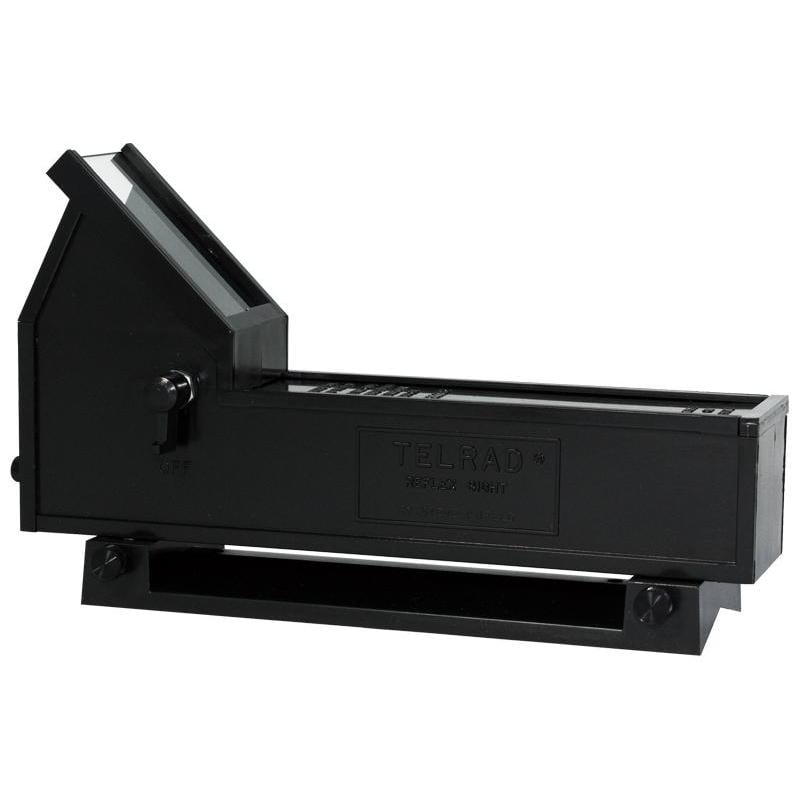
|
|
|
|
I got a chance to go out and see Lovejoy using my 6". No pictures except a noisy wide-angle tripod shot in which it's barely detectable, but it was distinctly green through the telescope. Even got a chance to show it to a cop who stopped to see what I was doing.
|
|
|
|
Haven't had the scope out in a month, it's been too drat cold out. The cold doesn't bother me, but apparently at around ~15F the display on my scope's tracker stops working. I guess I'm not surprised, it's an old-style LCD that doesn't take to the cold very well. Also, working with metal scope/camera adapter parts at those temps is pretty painful... time to invest in some nice gloves that still let me articulate my fingers. What's frustrating is that it's actually above freezing this weekend. And 100% cloudy.
|
|
|
|
So my binoculars came in! I couldn't wait to go find a dark spot so I just went out side my apartment complex to see what the sky looked like. I found Jupiter! Could easily make out like 3 moons around it. I also think I found Orions Nebula? It wasnt the cool redish orangish color like I see in the pictures though so I'm not sure if thats what i"m looking at. Right now I'm using an iPhone app to help me find stuff in the sky. Is that an ok tool to use for now while I wait for this book I ordered comes in?
|
|
|
|
smarion2 posted:So my binoculars came in! I couldn't wait to go find a dark spot so I just went out side my apartment complex to see what the sky looked like. I found Jupiter! Could easily make out like 3 moons around it. I also think I found Orions Nebula? It wasnt the cool redish orangish color like I see in the pictures though so I'm not sure if thats what i"m looking at. Except for bright objects like planets and the occasional bright comet (e.g Lovejoy right now), you'll never see color through a telescope. Our eyes aren't adapted well for seeing color in the dark, so fainter stuff like nebulae and galaxies will always just appear like grey smudges. (Of course, the real excitement is knowing what that grey smudge really is.) An iPhone app will work in a pinch, but I'd make sure you turn on the red filter to save your dark adaptation.
|
|
|
|
The other night I had the oddest sensation that I was seeing a dim red and blue tint to the Orion Nebula, which I've never had happen before. It's usually greenish, I wonder if the sky transparency was letting just enough light in to pick up color. But yeah, color is a pretty rare thing. Basically limited to planets and bright stars. Got a widefield shot of Comet Lovejoy last night, mingling with the clusters and gas clouds of Taurus and Auriga. 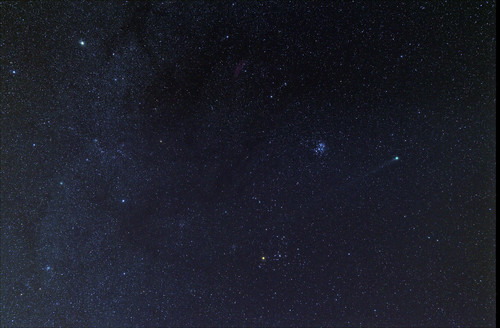 Comet Lovejoy and the Taurus Dust Complex by venusian-weasel, on Flickr Comet Lovejoy and the Taurus Dust Complex by venusian-weasel, on FlickrIt's 22 1/2 minutes total exposure, stacked from 45x30 second exposures. Venusian Weasel fucked around with this message at 03:43 on Jan 18, 2015 |
|
|
|
Luneshot posted:Except for bright objects like planets and the occasional bright comet (e.g Lovejoy right now), you'll never see color through a telescope. Our eyes aren't adapted well for seeing color in the dark, so fainter stuff like nebulae and galaxies will always just appear like grey smudges. (Of course, the real excitement is knowing what that grey smudge really is.) Ok that's good to know. I'm pretty sure I found the nebula then! It was milky looking I couldn't really get much detail out of it but it didnt really look like a star cluster. I found a really bright yellow star around there as well I'm assuming its Betelegeuse? This is pretty cool haha I can't wait till I can try this at a place thats actually dark. How much of a difference does it make to do this when its completely dark out? Edit: What do you mean by dark adaptation? smarion2 fucked around with this message at 03:36 on Jan 18, 2015 |
|
|
|
Venusian Weasel posted:The other night I had the oddest sensation that I was seeing a dim red and blue tint to the Orion Nebula, which I've never had happen before. It's usually greenish, I wonder if the sky transparency was letting just enough light in to pick up color. But yeah, color is a pretty rare thing. Basically limited to planets and bright stars. That's a cool shot. How do you do something like that? What equipment did you use and how do you process the images to get that kinda color and clarity?
|
|
|
|
smarion2 posted:Ok that's good to know. I'm pretty sure I found the nebula then! It was milky looking I couldn't really get much detail out of it but it didnt really look like a star cluster. I found a really bright yellow star around there as well I'm assuming its Betelegeuse? At night, your retinas secrete a chemical called "visual purple" that makes the light-sensitive cells in your eyes better at picking up faint detail. It takes a while to build up to its maximum level (about 30-45 minutes), but it gets destroyed quickly if you look at bright light. The chemical is less sensitive to red light than it is green or blue, which is why astronomers almost invariably use dark red filters on their flashlights. Van Dis posted:That's a cool shot. How do you do something like that? What equipment did you use and how do you process the images to get that kinda color and clarity? Used an off-the-shelf Nikon DSLR with a widefield lens. I had it set up on a tracking mount so the stars didn't move while I took the pictures, and then I used the program DeepSkyStacker to add the individual shots together so I could see more of the faint stuff. I then did some image adjustments in Photoshop, mostly just playing with levels and curves. I also did a trick to make the faint stars a little fainter, since with long-exposure photography the faint stars tend to look brighter than they actually are, which makes it harder to pick out the familiar star patterns that you'd see visually. Venusian Weasel fucked around with this message at 03:51 on Jan 18, 2015 |
|
|
|
Venusian Weasel posted:The other night I had the oddest sensation that I was seeing a dim red and blue tint to the Orion Nebula, which I've never had happen before. It's usually greenish, I wonder if the sky transparency was letting just enough light in to pick up color. But yeah, color is a pretty rare thing. Basically limited to planets and bright stars. Goddamn that's beautiful! I see you even caught the Flaming Star Nebula in there too. Really nice work, I can't wait until the day I finally get a camera and mount I can do that with. smarion2 posted:Ok that's good to know. I'm pretty sure I found the nebula then! It was milky looking I couldn't really get much detail out of it but it didnt really look like a star cluster. I found a really bright yellow star around there as well I'm assuming its Betelegeuse? The darkness of your sky doesn't really affect what you can see for planets, most of them (except Neptune) are all bright enough that light pollution doesn't do anything. For planets and bright star clusters, your limiting factor is going to be 'seeing'- basically, turbulence in the atmosphere. The lower down the object is in the sky, the worse it'll be- hence why stars near the horizon twinkle more. For diffuse objects like nebulae and galaxies, seeing doesn't matter that much but light pollution is extremely important, along with transparency (the amount of water vapor in the atmosphere). Those basically affect contrast, meaning that dim objects will blend in more with the sky background and make it much harder to see. The moon is a real factor in seeing dim things too, it reflects a lot of light into the atmosphere and basically acts as light pollution you can't get away from at all. If you live in North America, I highly recommend Clear Dark Sky, a site which can tell you the expected observing conditions for any site defined as an observatory (although you usually find private sites on there too!) Find one near you and take a look at it- it usually updates twice a day.
|
|
|
|
It's not actually raining here in England at the moment, so I've managed to finish off my Jellyfish with the SII and OIII data. The SII on this object is nearly as strong as the HA as it goes which surprised me, while OIII really only shows up at the very tips on the nebula (it's blue in this color blend). I've tried to keep this one as a natural style image, but I may go back and do a hubble palette processing as well at some point.  IC443 - Jellyfish Nebula by tmarkuk, on Flickr IC443 - Jellyfish Nebula by tmarkuk, on Flickr
|
|
|
|
I know it's nowhere near the quality of photo that should be posted but here's my first experiment with the NexImage 5 solar system imager on my NexStar 4SE. It was also my first time playing with registax. I'm totally jazzed by this. I've got a lot of learning to do though. I'm glad I finally got a moonless night with a clear sky and temperatures above 30F.
|
|
|
|

|
| # ? Apr 29, 2024 11:38 |
|
Nah, don't kick yourself, that's not bad for a beginner! I would suggest looking into a program called Autostackert, it supposedly does a better job stacking than Registax. From what I've read most people use Autostackert for stacking, then process the stacked image in Registax. Better get practicing, there's a triple shadow transit of its moons in a few days!
|
|
|





